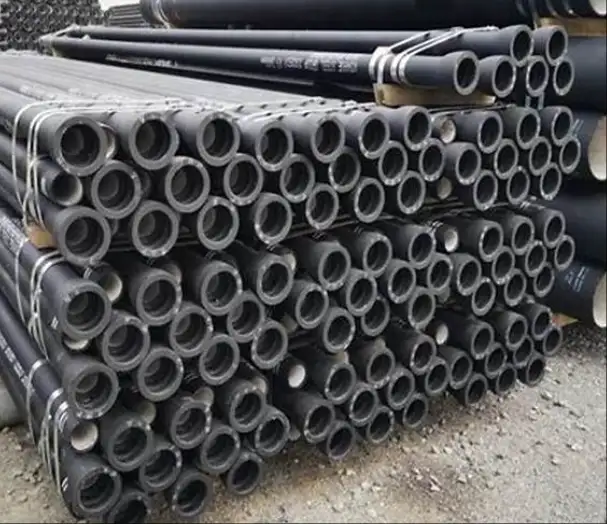Graphite cast iron, a versatile material in the family of cast irons, is distinguished by its unique graphite microstructure. This structure imparts a combination of strength, thermal conductivity, and machinability, making it suitable for a wide range of applications. Understanding its properties and uses is essential for industries ranging from automotive to heavy machinery.

What Is Graphite Cast Iron?
Graphite cast iron is a type of cast iron characterized by the presence of graphite in its microstructure. The graphite can exist in various forms, such as flakes, nodules, or compacted structures, each influencing the material’s properties differently. The distribution and morphology of graphite are critical in determining the mechanical and thermal characteristics of the cast iron.
Types of Graphite Cast Iron
1. Gray Cast Iron
Gray cast iron is the most common form, featuring graphite flakes within a ferritic or pearlitic matrix. This structure provides excellent damping capacity and machinability but results in lower tensile strength.
2. Ductile (Nodular) Cast Iron
Ductile cast iron, also known as spheroidal graphite iron, contains graphite in the form of nodules. This morphology enhances the material’s strength and ductility, making it suitable for structural applications.
3. Compacted Graphite Iron (CGI)
Compacted graphite iron features graphite particles that are shorter and thicker than those in gray cast iron. This structure offers a balance between the properties of gray and ductile cast irons, providing improved strength and thermal conductivity.
Properties of Graphite Cast Iron
1. Mechanical Properties
-
Strength and Ductility: The presence of graphite in various forms affects the material’s tensile strength and ductility. For instance, ductile cast iron exhibits higher strength and ductility compared to gray cast iron.
-
Hardness: The hardness of graphite cast iron varies depending on the graphite morphology and matrix structure.
2. Thermal Properties
-
Thermal Conductivity: Graphite’s high thermal conductivity aids in the even distribution of heat, making graphite cast iron suitable for applications involving thermal cycling.
-
Thermal Expansion: The material’s thermal expansion properties are influenced by the graphite content and distribution.
3. Machinability
Graphite cast iron generally offers good machinability. The graphite particles act as lubricants during machining, reducing tool wear and improving surface finish.
4. Wear Resistance
The wear resistance of graphite cast iron is influenced by the graphite content and distribution. Higher graphite content can enhance wear resistance due to the self-lubricating properties of graphite.
Applications of Graphite Cast Iron
1. Automotive Industry
-
Engine Blocks and Cylinder Heads: Ductile cast iron is commonly used for engine blocks and cylinder heads due to its strength and thermal conductivity.
-
Brake Discs and Rotors: Gray cast iron’s excellent damping capacity makes it ideal for brake components.
2. Industrial Machinery
-
Machine Tool Frames: The damping properties of gray cast iron help reduce vibrations in machine tools.
-
Pump Housings: The corrosion resistance and machinability of graphite cast iron make it suitable for pump housings.
3. Heavy Equipment
-
Crankshafts and Gearboxes: Ductile cast iron’s strength and toughness are beneficial for components subjected to high stresses.
-
Railroad Components: Compacted graphite iron is used in high-speed train brake discs due to its balance of strength and thermal conductivity.
Comparison with Other Cast Irons
| Property | Gray Cast Iron | Ductile Cast Iron | Compacted Graphite Iron |
|---|---|---|---|
| Graphite Form | Flakes | Nodules | Compacted |
| Strength | Moderate | High | High |
| Ductility | Low | High | Moderate |
| Thermal Conductivity | High | Moderate | High |
| Machinability | Excellent | Good | Good |
| Wear Resistance | Moderate | High | High |
Frequently Asked Questions (FAQs)
1. What is the difference between gray cast iron and ductile cast iron?
Gray cast iron features graphite in the form of flakes, leading to a brittle structure with excellent damping capacity and machinability. In contrast, ductile cast iron contains graphite in nodular form, enhancing its strength and ductility, making it suitable for structural applications.
2. Why is compacted graphite iron used in high-speed train brake discs?
Compacted graphite iron is utilized in high-speed train brake discs because of its combination of high strength, thermal conductivity, and wear resistance. These properties are crucial for components subjected to high thermal and mechanical stresses.
3. Can graphite cast iron be welded?
Yes, graphite cast iron can be welded; however, the process requires careful control of heat input and preheating to prevent cracking. The presence of graphite can make welding more challenging compared to other materials.
4. What are the environmental benefits of using graphite cast iron?
Graphite cast iron’s durability and longevity reduce the frequency of replacements, leading to less material waste. Additionally, its excellent damping properties can contribute to noise reduction in various applications.
5. How does the graphite structure affect the properties of cast iron?
The graphite structure significantly influences the mechanical and thermal properties of cast iron. Flake graphite in gray cast iron leads to a brittle structure, while nodular graphite in ductile cast iron enhances strength and ductility. Compacted graphite iron offers a balance between these properties, providing improved strength and thermal conductivity.
Conclusion
Graphite cast iron is a versatile material with a range of applications across various industries. Its properties, influenced by the form and distribution of graphite, make it suitable for components requiring specific mechanical and thermal characteristics. Understanding the differences between the types of graphite cast iron and their respective properties is essential for selecting the appropriate material for a given application.
